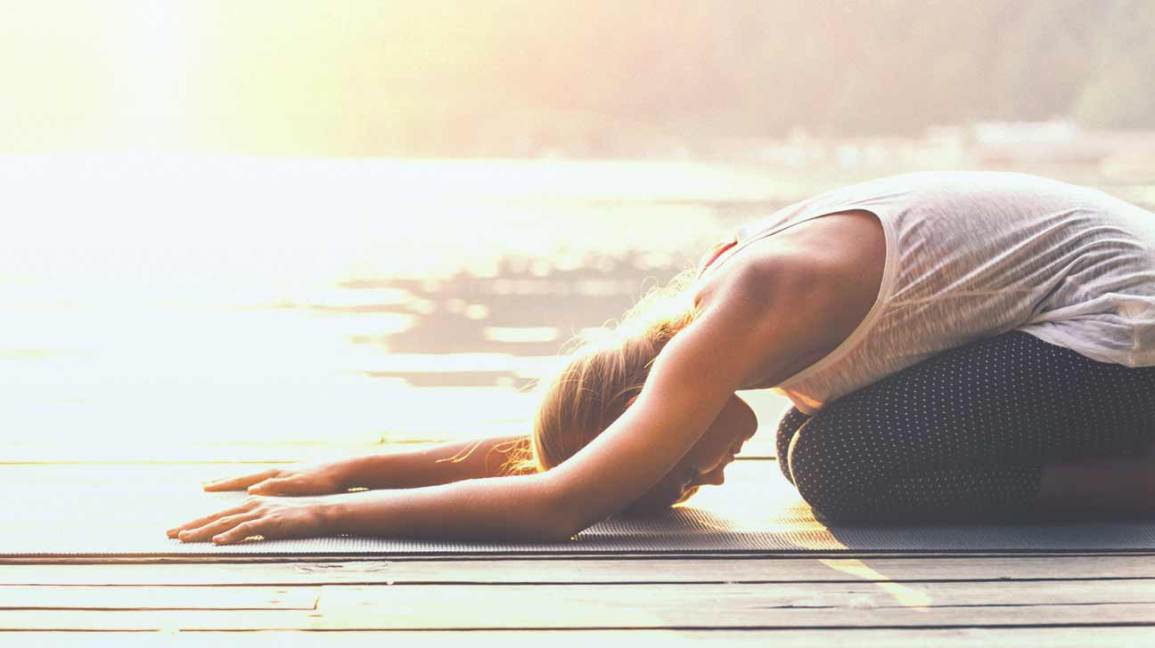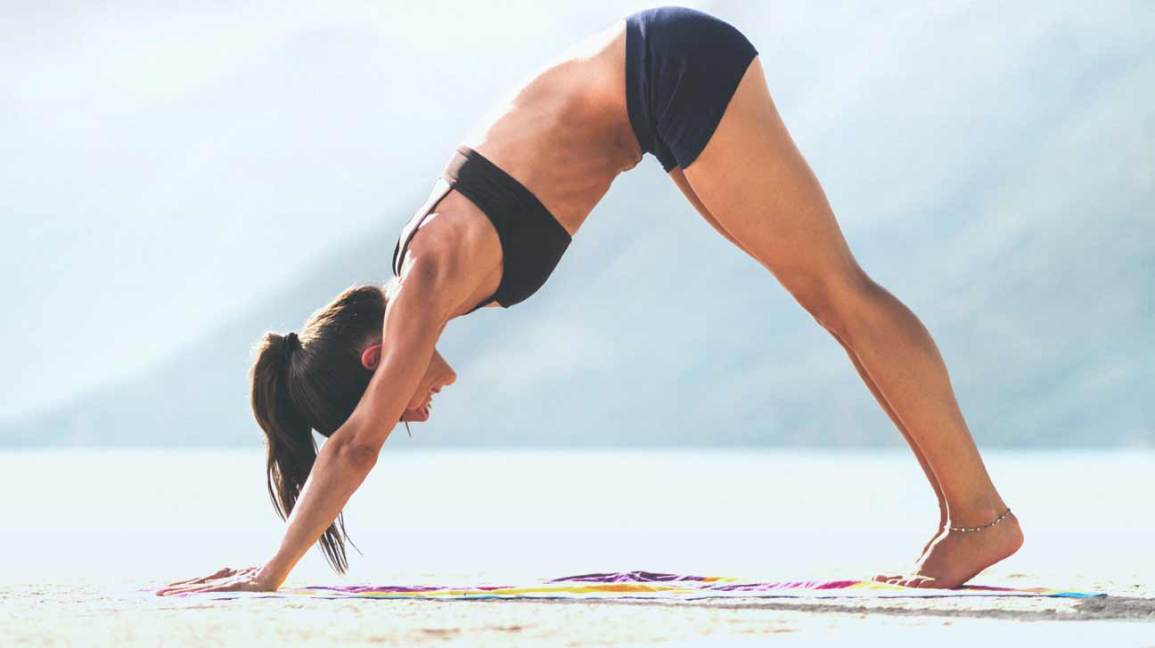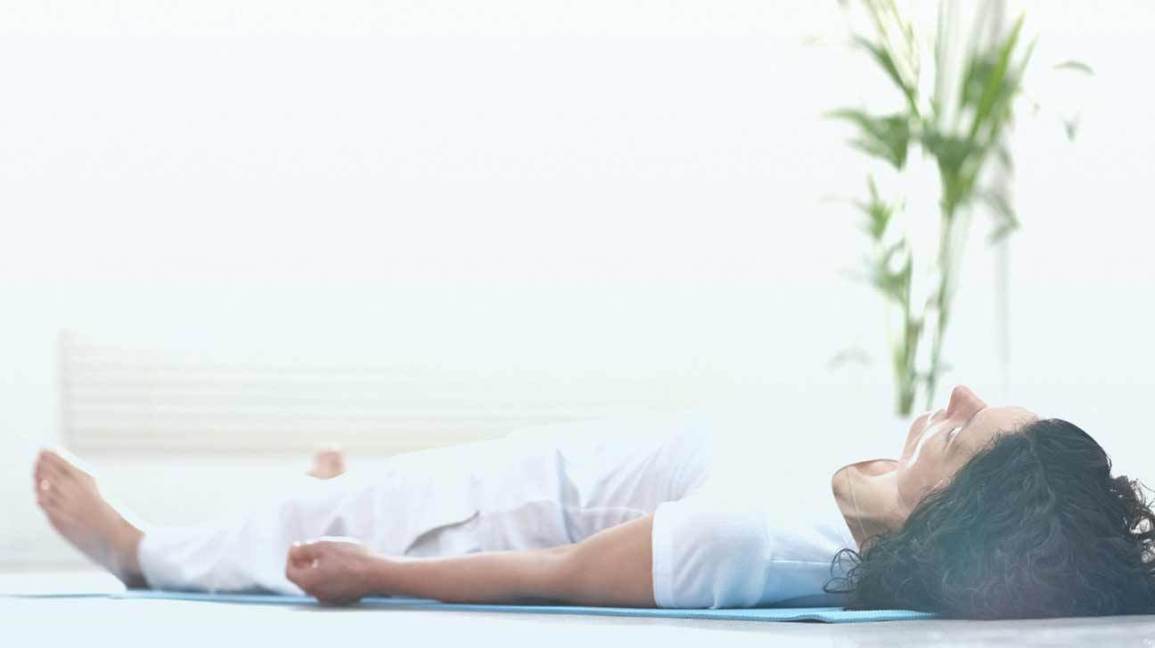Yoga can provide more than just physical fitness. It can bring calm and peace to your mind and body, as well as help with ailments such as anxiety, depression, and pain…
It isn’t clear exactly how yoga changes the body in this manner, though the parasympathetic nervous system (PNS) may play a role. During yoga, the PNS can slow your heart rate and lower your blood pressure. This allows your body to recover after a stressful event, such as a migraine.
Migraines are more intense than common headaches. They’re typically characterized by a throbbing pain on one side of the head. They’re often accompanied by nausea, dizziness, and sensitivity to light and sound. Migraines can last anywhere from a few hours to a few days.
Not only is yoga a holistic approach to fighting migraines as they’re happening, it’s also a proactive approach to reduce the pain.What does the research say?
A 2014 studyTrusted Source found that headache frequency and intensity was reduced in people who practiced yoga in addition to their regular treatment regimen. These participants also experienced an improvement in vagal tone, which refers to the amount of activity in the PNS.
Overall, yoga improved the cardiac autonomic balance. Disturbances in the autonomic nervous system and in the regulation of the circulatory system are associated with migraines. If balance is restored, the likelihood of a migraine is reduced.
What poses can you try?
Specific yoga poses can target tension and stress, which may be contributing to your migraines. Certain poses can help boost circulation and improve blood flow to your brain. This may lessen any pain or throbbing sensations that you’re having.
Here are four poses that may help relieve your symptoms and balance your physical, mental, and emotional states.
Child’s pose

The child’s pose can calm the nervous system and reduce pain.
- Kneel on the floor. You should keep your toes together and spread your knees as wide as you can.
- Lower your buttocks onto your heels.
- Sit up straight and allow your body to adjust to this position.
- After you exhale, lean forward so that your head and chest rests between or on top of your thighs. Allow your forehead to rest on the floor.
- Your arms should remain extended, palms facing down.
- Hold for one minute or more, allowing your neck and shoulders to release any tension.
To come out of this pose, use your hands to push yourself upward and sit back on your heels.
Bridge pose

This pose opens the chest, heart, and shoulders, and can reduce any anxiety you may be having.
- Lie on your back on the floor. Your knees should be bent, and your feet should be on the floor.
- Extend your arms. Your palms should be flat on the floor.
- Lift your pelvic region upward. Your torso should follow. Your shoulders and head should remain on the floor.
- Make sure your thighs and feet remain parallel. Your weight should be distributed evenly.
- Hold this position for up to one minute.
To release this pose, you should slowly drop your torso and pelvic region down onto the floor. Allow your knees to sink downward until you’re laying flat on the floor. From there, you should slowly rise into an upright position.
Downward facing dog

The downward face dog can increase circulation to the brain.
- Start on your hands and knees. Align your wrists under your shoulders and your knees under your hips.
- Stretch out your elbows and relax your upper back.
- Spread out your fingers and press down. Your weight should be distributed evenly between your hands.
- Gently lift your knees off the floor.
- You should straighten your legs, but be careful not to lock your knees.
- Lift your pelvis and lengthen your spine.
- Hold this for up to two minutes.
To come out of this pose, gently bend your knees and return to being on your hands and knees on the floor.
Corpse pose

This pose can restore your body to a deep state of rest.
- Lie on the floor with your back to the ground.
- Let your legs spread slightly apart, and move your arms to your side. Your palms should face up to the ceiling
- Hold this position for between 5 and 30 minutes.
Some find it helpful to listen to relaxing music during this pose. During a migraine you may be sensitive to noise, so you will need to decide if the music helps you relax.
To exit this pose, you should slowly introduce awareness back into your body. Wiggle your fingers and toes. Roll to one side and allow yourself to rest there for a moment. Slowly move yourself into an upright position.
Although you can try these poses during a migraine, you may have better results if you add yoga to your daily routine.

















































